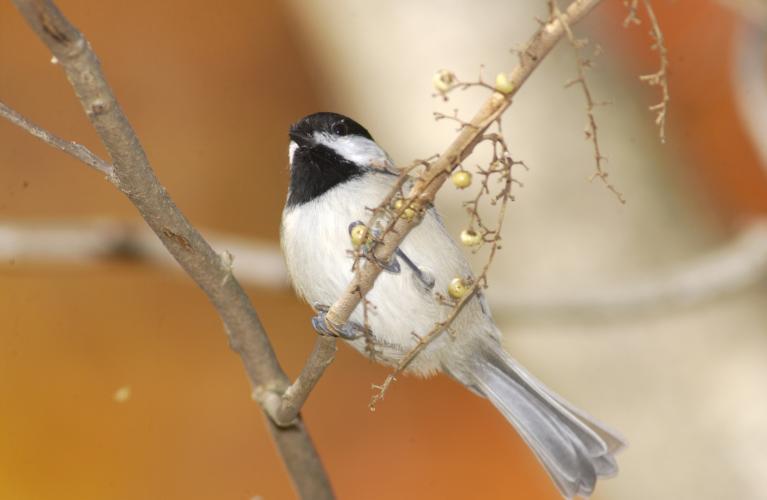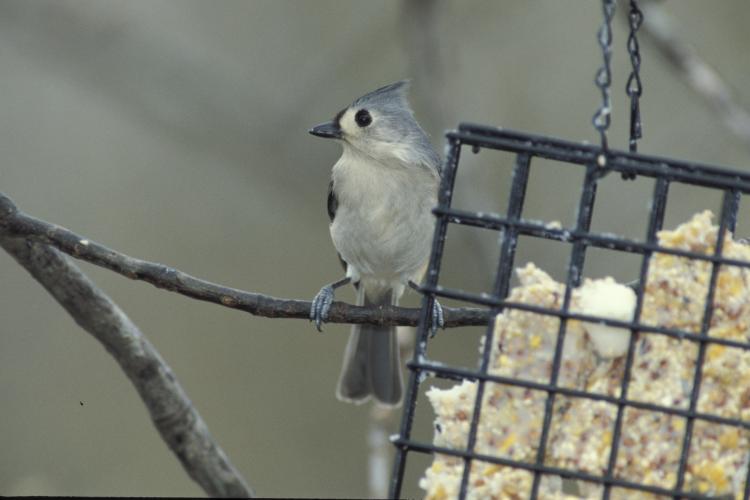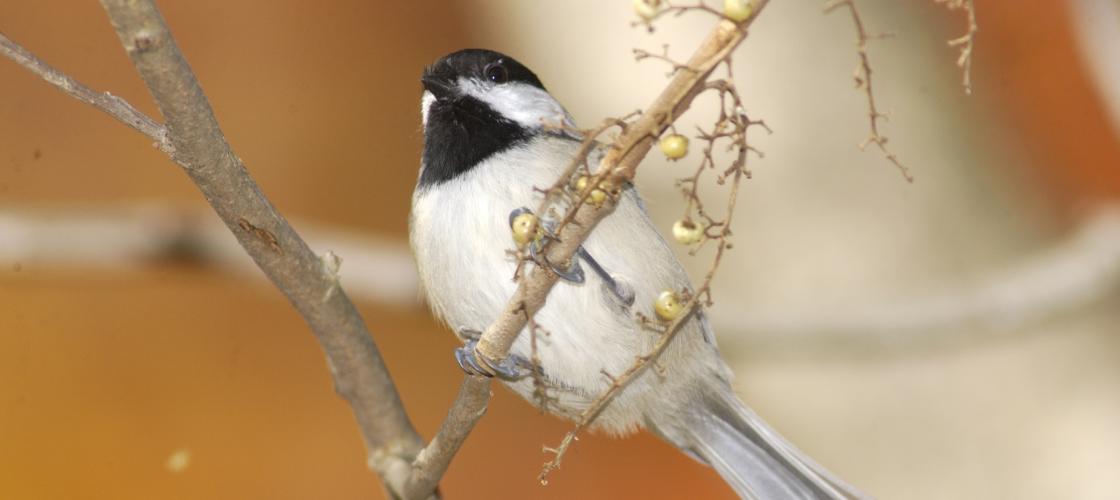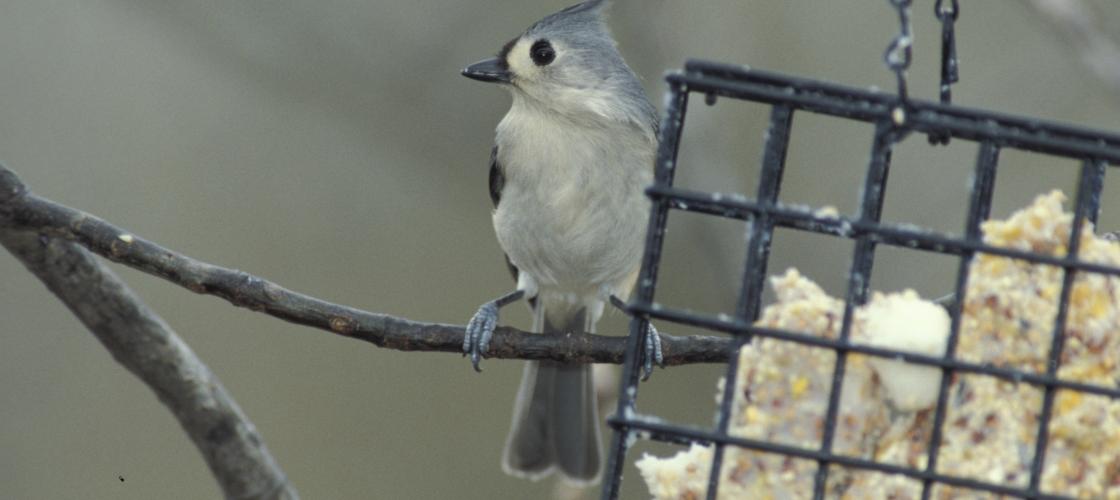When you’re outside on a blustery winter day, bundled to the hilt and still cold, you may wonder at the little chickadee, seemingly doing just fine. How can these little birds survive?
A first defense against cold is feathers--nature’s finest natural insulator. Birds have as many as one-third more feathers in the winter as in the summer. Down feathers next to the skin entrap insulating pockets of air. On really cold days, birds ruffle their feathers, trapping more air.
Roosting birds often tuck their bills into their feathers to reduce heat loss through the nostrils. They pocket their feet among their feathers when at rest. And when they’re active, they often perch on one foot at a time. The temperature of exposed feet and legs can be lowered to just above freezing by an elaborate arrangement of vessels that exchange heat. This reduces the heat loss through the bare skin and insures that the vital organs remain warm.
On frigid days birds must stoke their tiny furnaces by feeding almost constantly. A drop of 20 degrees can double their metabolic rate. So, if you are among the millions of people that enjoy feeding birds, don’t be surprised if you have to increase the food supply as the temperature drops.
Keeping Warm:
Baby, it's cold outside! The Audubon Society provides some additional insight as to how birds stay warm in the winter.
Birds can put on fat as both an insulator and energy source: More than 10 percent of winter body weight may be fat in certain species, including chickadees and finches. As a result, some birds spend the vast majority of their daylight hours seeking fatty food sources, making feeder food even more precious for surviving a frosty night.
Many bird species have the ability to keep warm blood circulating near vital organs while allowing their extremities to cool down. Take gulls: They can stand on ice with feet at near-freezing temperatures while keeping their body's core nice and toasty.
Sparrows seek out shelter in dense foliage or cavities to avoid the elements. They also huddle, bunching together to share warmth, and try to minimize their total surface area by tucking in their head and feet and sticking up their feathers.
Cardinals, impossible to miss against the snow, and other smaller birds puff up into the shape of a little round beach ball to minimize heat loss.
Read more about how birds keep warm in the winter from the Audubon Society.




Recent Posts
























